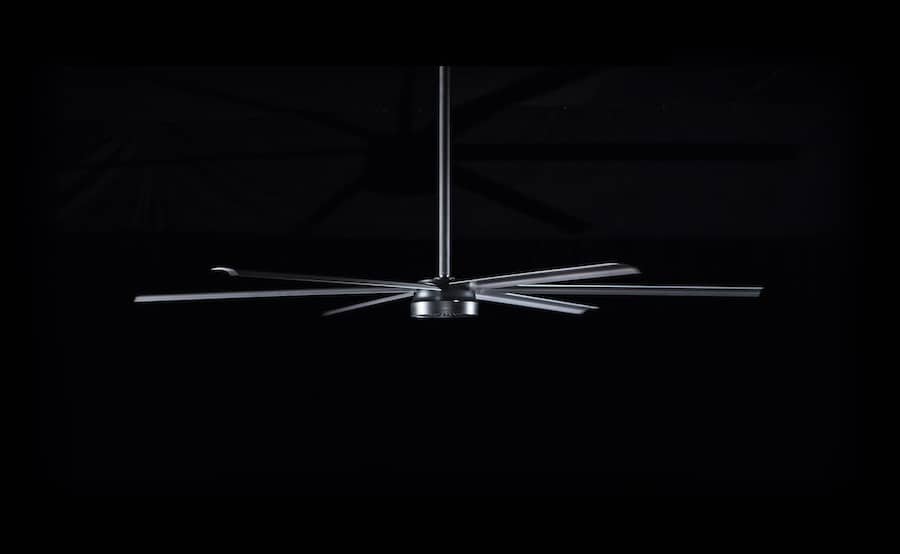MacroAir isn’t merely a company that produces, they’re a company that invents and innovates. As a machine with such a seemingly limited and straightforwardly fixed purpose, it’s almost easy to understand why so little experimenting has been done with the tried-and-true fundamentals of commercial fans. Despite this, MacroAir remains ahead of the curve as they have consistently demonstrated themselves to be. It’s almost unsurprising that they have risen from the laboratory with a near reinvention of the proverbial wheel. As a result, the latest from the MacroAir force is the “gearless”AirVolution-D premium fan line .
MacroAir was the first on the scene with the High Volume Low Speed (HVLS) fan, and they’ve beaten their competitors to the punch yet again with the energy efficient AirVolution-D fan line by subverting the fundamentals. While the gearbox has long been the principle vital organ of the industrial HVLS fan, the MacroAir team has this time around omitted that ingredient entirely in favor of a more efficient alternative. By employing transverse torque technologies, MacroAir has devised a “DC brushless motor” that is three times smaller in size while five times more powerful in performing its functional purpose.

In addition to significantly reducing moving parts such as copper and magnets–eliminating upkeep and maintenance costs, one other reason why AirVolution-D’s signature DC brushless motor is a superior rival to the traditional standard AC induction motor is that it remains energy efficient at all speeds. Conversely, “AC induction motors drop off and become incredibly inefficient at anything other than full speed,” explains Eddie Boyd, MacroAir CEO and president. And though the AirVolution-D line operates advantageously at all speeds, the general need for the fan to be running at full speed is in fact minimized. The Environmental Protection Agency has even recently given the product their stamp of approval, inheriting the energy-saving benefits of the AirVolution-D’s optimal temperature control capabilities. “We needed a solution to prevent major temperature swings that we had in one of our work spaces. The area was always about 4-10 degrees hotter in the summer and 6-12 degrees colder during winter than the adjacent work areas,” says Michael Geeting, facilities engineer at the EPA’s National Vehicle and Fuel Emissions Laboratory. “Since installing the AirVolution-D, comfort levels in the work area for our employees has improved their morale, and now our HVAC units do not have to run as long to maintain a consistent temperature in the area.” He also notes that workspace temperature is now stabilized within 2-3 degrees of the surrounding areas during the seasons. The AirVolution-D line is groundbreaking in that it moves air more effectively while controlling both temperature, noise, and speed. Though the general sleek and simple design of the fan might seem at first glance to defy its engineering triumph, the AirVolution-D stunningly generates more than two horsepower in its largest (170 newton meter) model, and even at that manages to eliminate the shrill noise that is all too familiar to the gearbox-based fans powered by three phase induction AC motors. “It’s pleasant,” Boyd remarks, “Nobody wants to hear a whining gearbox up there.” This also opens up the door for greater marketability, Boyd explains, as it fulfills the obvious needs of a plethora of institutions. “The good thing about it, is that it also opens up potential opportunities—churches, auditoriums, restaurants, theaters—so we’ve created a huge market with the fact that it doesn’t make any noise at all.”

Temperature control is achieved by way of the de-stratifying process aided by the fans ability to help regulate a consistent temperature from the floor to the ceiling. Usually, as Boyd explains, when heating a building during the cold winter months, “You can see a 20 to 30 degree split in temperature between the floor and the ceiling in a building that has heaters.” Thus, without fans, this demands potentially heating the building 20 to 30 more degrees to compensate. The de-stratification in effect conforms all space to the same temperature, which can result in substantial savings on energy costs.
While the AirVolution-D currently enjoys status as being the first of its kind, Eddie Boyd sees it as a needed revision to the industry template to be adopted universally over time. But that doesn’t mean MacroAir won’t continue to outshine their competitors. They are, after all, fundamentally different at their very core. “We’ve been able to do this because we’re constantly looking for ways to improve,” Boyd remarks. “That’s just the way we are.”

